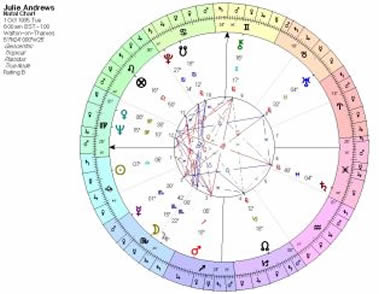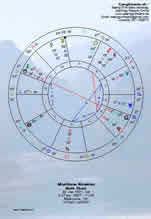

Ī diagram in Johannes Kamateros' 12th century Compendium of Astrology shows the Sun represented by the circle with a ray, Jupiter by the letter zeta (the initial of Zeus, Jupiter's counterpart in Greek mythology), Mars by a shield crossed by a spear, and the remaining classical planets by symbols resembling the modern ones, without the cross-mark seen in modern versions of the symbols. Bianchini's planisphere, produced in the 2nd century, shows Greek personifications of planetary gods charged with early versions of the planetary symbols: Mercury has a caduceus Venus has, attached to her necklace, a cord connected to another necklace Mars, a spear Jupiter, a staff Saturn, a scythe the Sun, a circlet with rays radiating from it and the Moon, a headdress with a crescent attached. Maunder finds antecedents of the planetary symbols in earlier sources, used to represent the gods associated with the classical planets. The symbols for Jupiter and Saturn are identified as monograms of the initial letters of the corresponding Greek names, and the symbol for Mercury is a stylized caduceus. The written symbols for Mercury, Venus, Jupiter, and Saturn have been traced to forms found in late Greek papyri.

In the original papyri of these Greek horoscopes, there are found a circle with one ray ( ) for the Sun and a crescent for the Moon. The astrological symbols for the classical planets appear in the medieval Byzantine codices in which many ancient horoscopes were preserved. Main articles: Astrological symbols and Planet symbols

The same seven planets, along with the ascending and descending lunar node, are mentioned in Vedic astrology as the nine Navagraha. The term planet in modern terminology is only applied to natural satellites directly orbiting the Sun (or other stars), so that only five of the seven classical planets are planets in the modern sense. Greek astronomers such as Geminus and Ptolemy often divided the seven planets into the Sun, the Moon, and the five planets. The word planet comes from two related Greek words, πλάνης planēs (whence πλάνητες ἀστέρες planētes asteres "wandering stars, planets") and πλανήτης planētēs, both with the original meaning of "wanderer", expressing the fact that these objects move across the celestial sphere relative to the fixed stars. In classical antiquity, the seven classical planets or seven luminaries are the seven moving astronomical objects in the sky visible to the naked eye: the Moon, Mercury, Venus, the Sun, Mars, Jupiter, and Saturn.


 0 kommentar(er)
0 kommentar(er)
